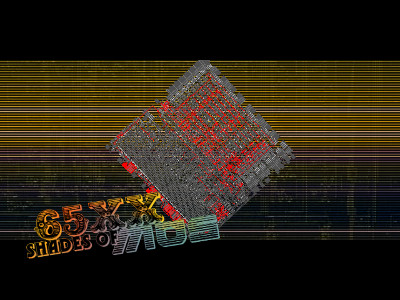|
65xx shades of MOS by Agenda
[nfo]
|
||||||||||||||
|---|---|---|---|---|---|---|---|---|---|---|---|---|---|---|

|
|
|||||||||||||
|
popularity : 58% |
|||||||||||||
alltime top: #14225 |
|
|||||||||||||
| added on the 2017-12-10 08:13:35 by svoy |
||||||||||||||
popularity helper
comments
Nice one! Keep on!
Wow. That’s pure demo art!
What a wonderful demo, and stellar as a first release. Designwise I think it would have been even better if it had only concentrated on simulating the 6502, but this is pretty epic nevertheless. Welcome to the scene!
Ossom! I really dig it.
Great startie! Congratulations!
Pretty massive thumbs up from my side!!!
First PC Demo which directly connects to the Atari 8bit demo scene :))
First PC Demo which directly connects to the Atari 8bit demo scene :))
Looked great on the big screen. Extremely fitting music and good sync. Some real "Wow" moments when I realized it probably actually the 6502 ;-)
kudos for releasing your whole tool together with the production, however it stutters badly when i try to run it, even in 800x600.
i have a quadcore i5 something something maybe it needs a lot of cpu? or maybe it is because i just launched the .jar directly and theres not enough ram avail?
anyway, great idea, great soundtrack, great execution
I just wish it would be a little more convenient to run
i have a quadcore i5 something something maybe it needs a lot of cpu? or maybe it is because i just launched the .jar directly and theres not enough ram avail?
anyway, great idea, great soundtrack, great execution
I just wish it would be a little more convenient to run
Absolutely adore the hardware simulation! Really enjoyed this prod.
Amazing, I can imagine amount of work involved but definitely worth the effort. hats down.
nice
submit changes
if this prod is a fake, some info is false or the download link is broken,
do not post about it in the comments, it will get lost.
instead, click here !

Note that many of the fx/sections here are 'artistic' variations on the actual simulator (running) of the actual CPU (6502). The CPU runs a simple 6502 assembler code, and you can see the internals, transistor changes, sensitivity maps, etc. Just like in Tron :P Big kudos to Visual6502 project.